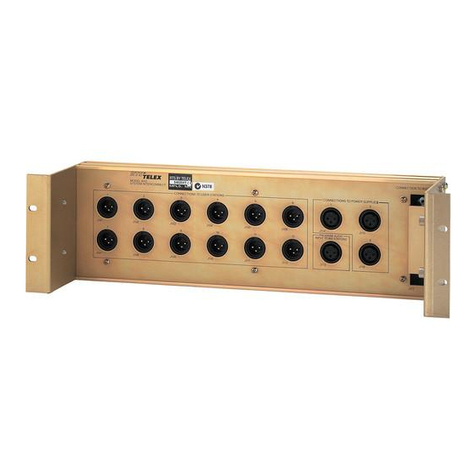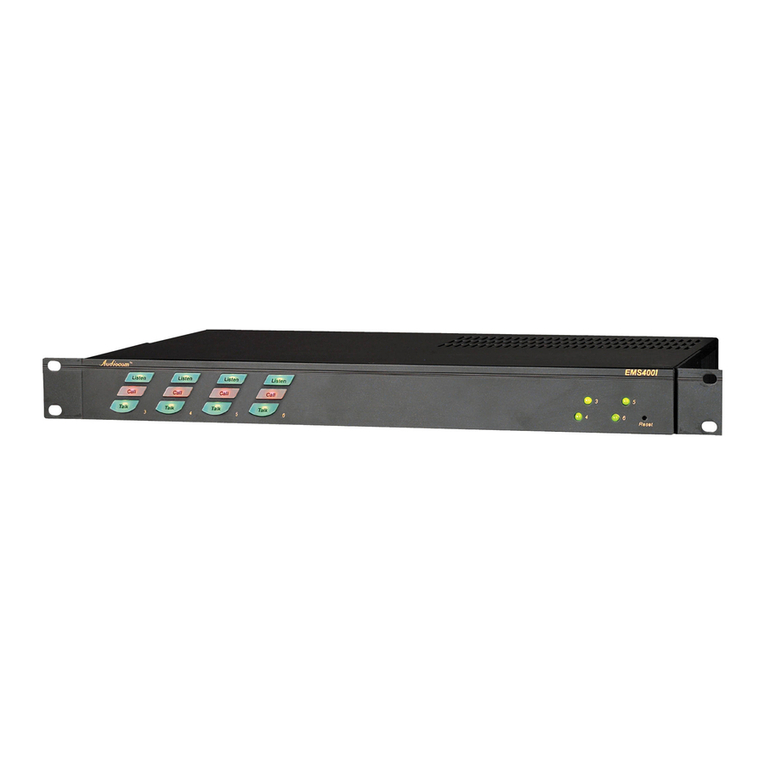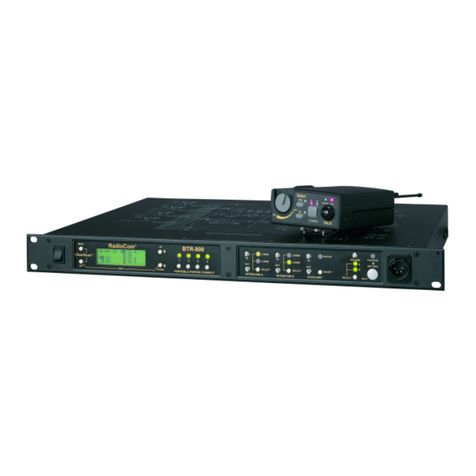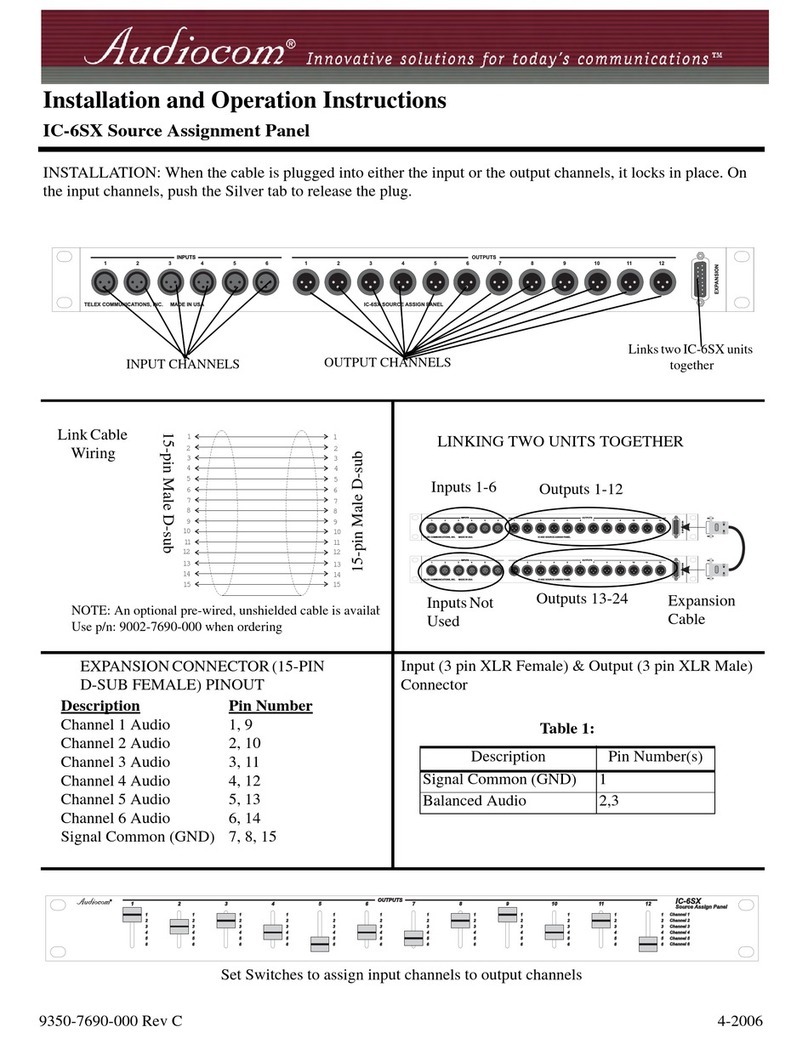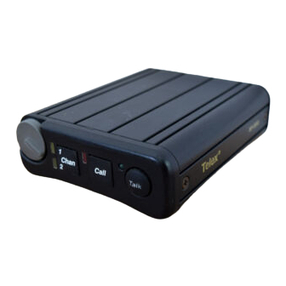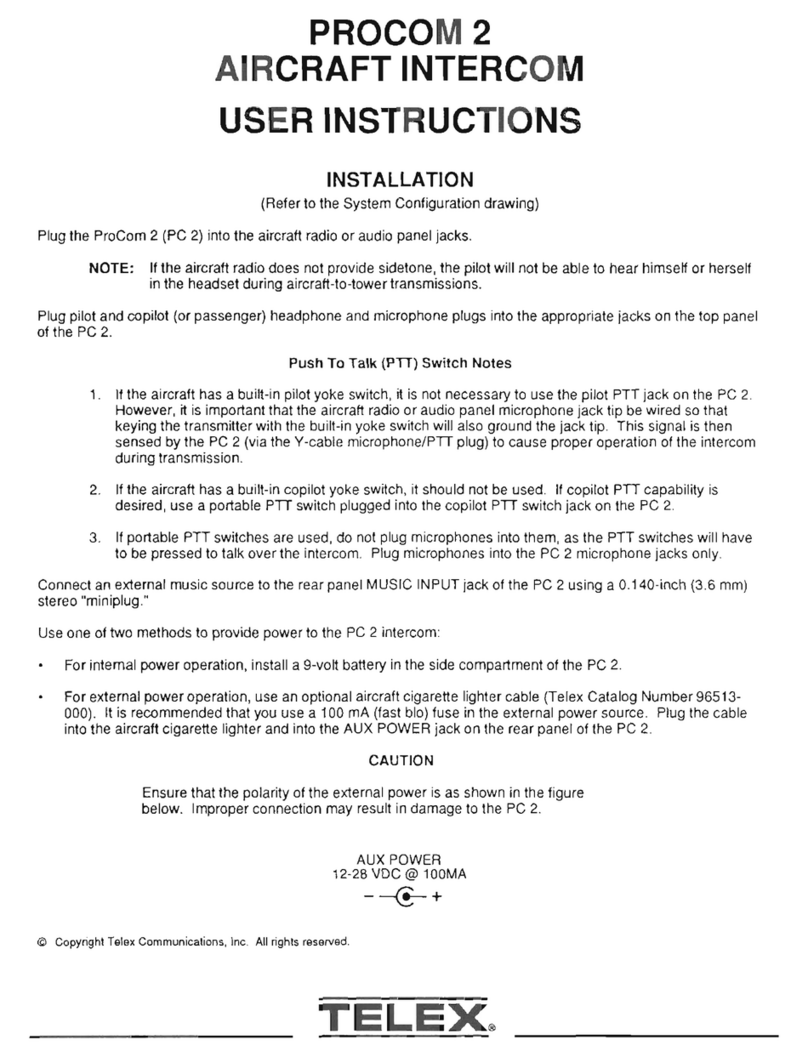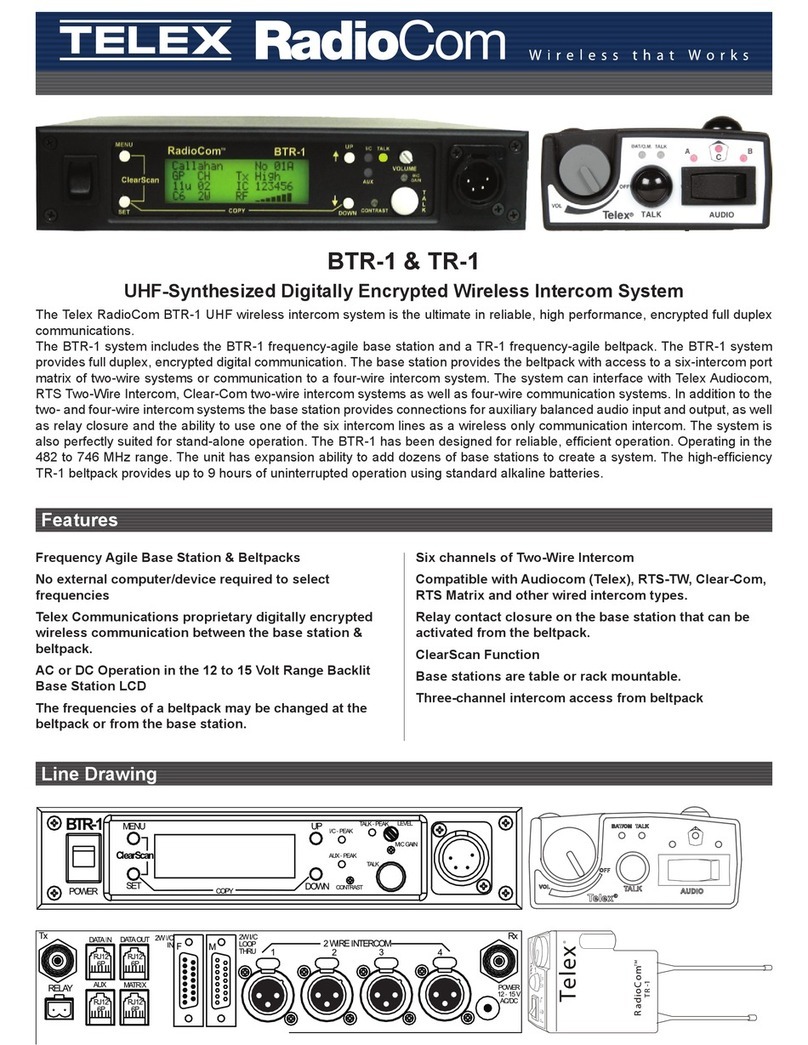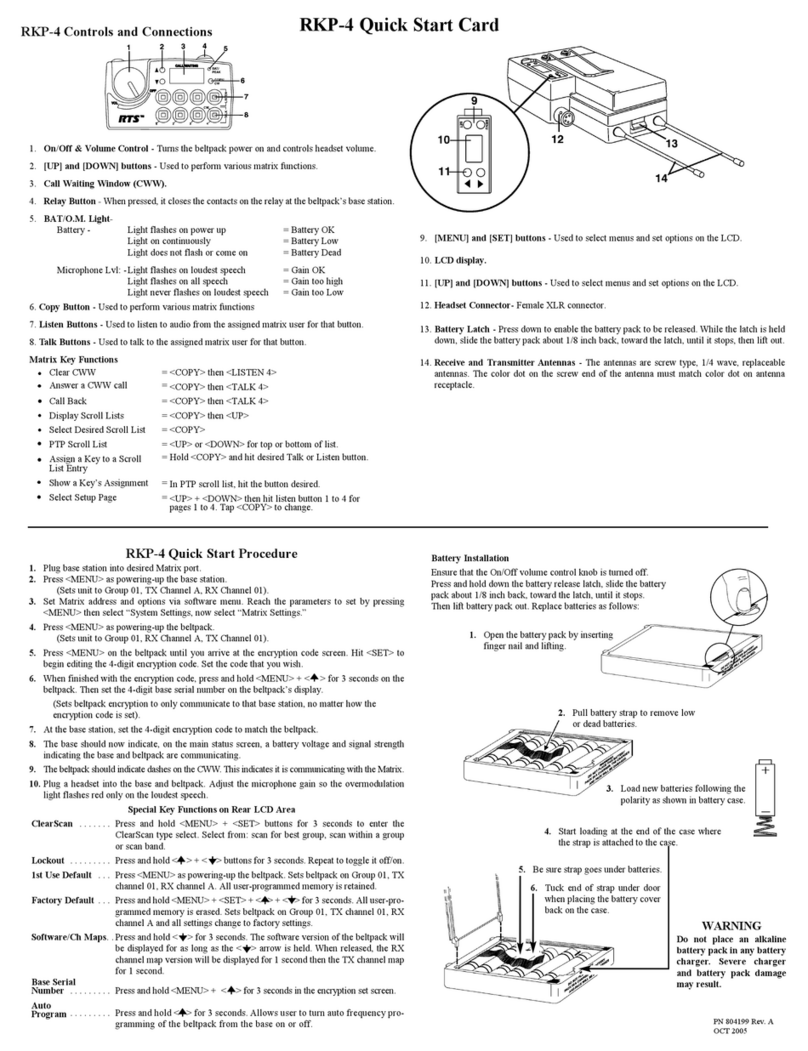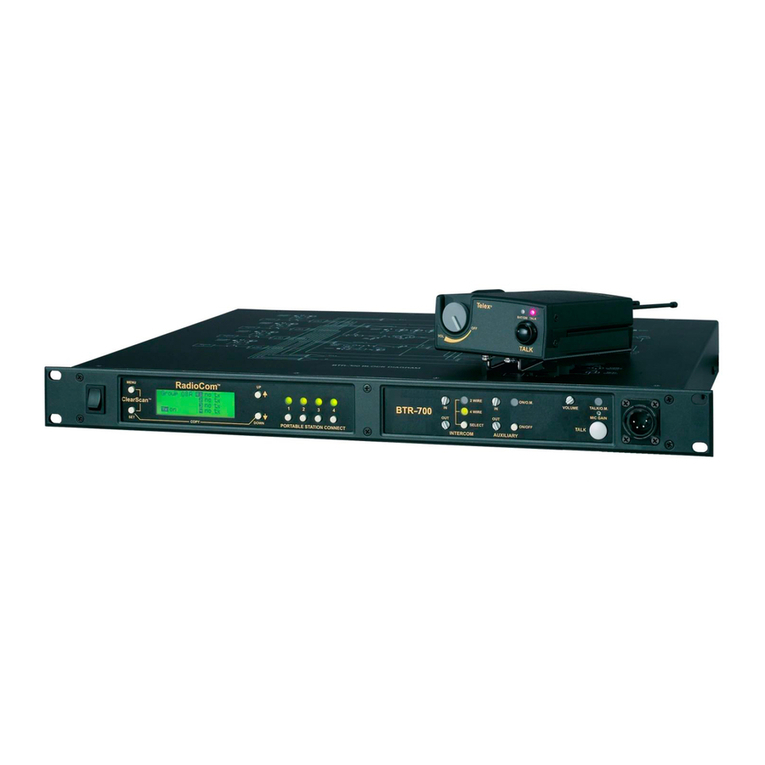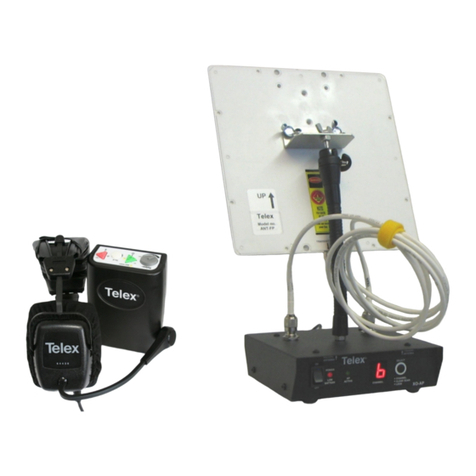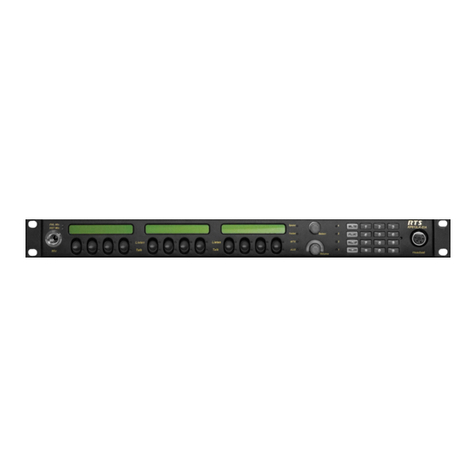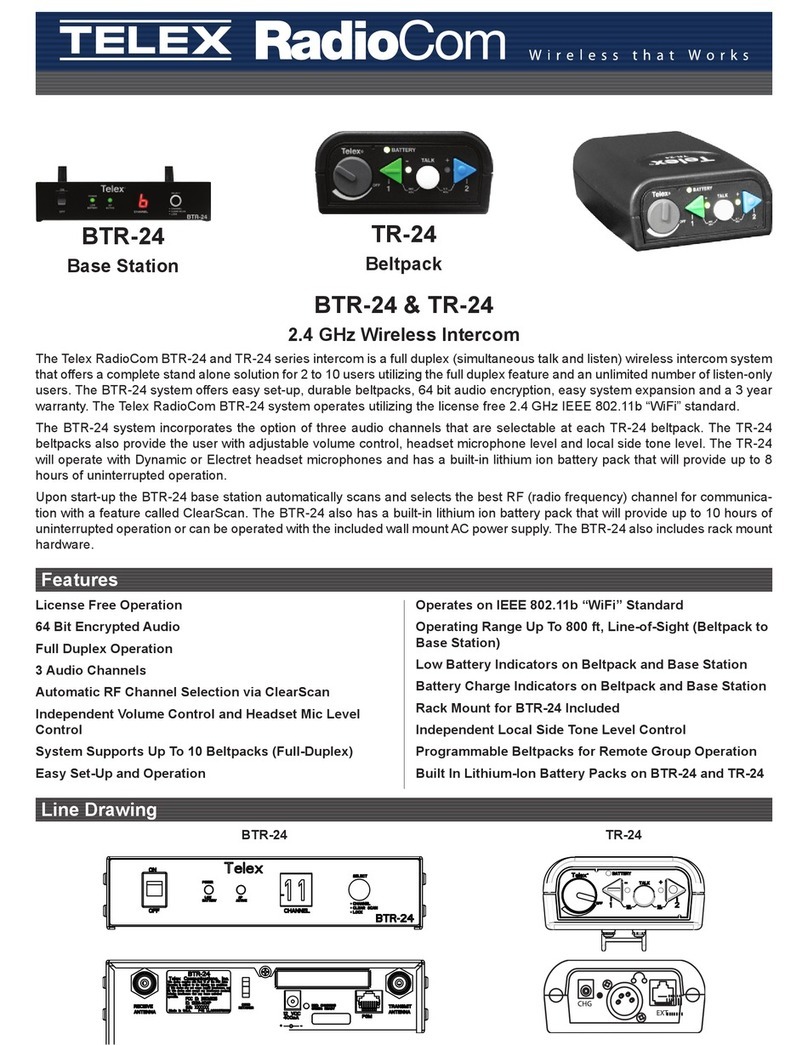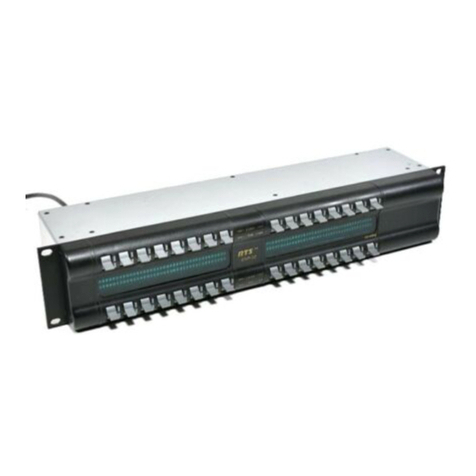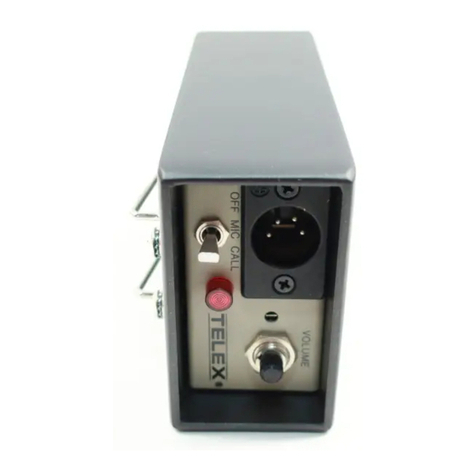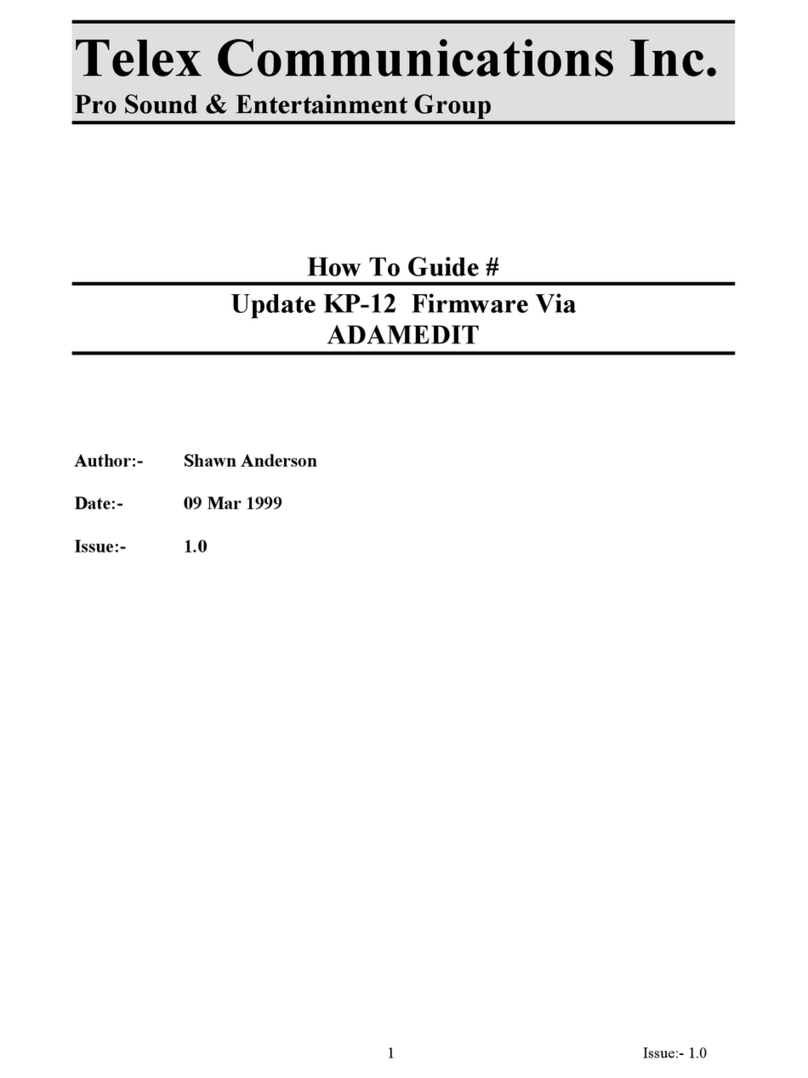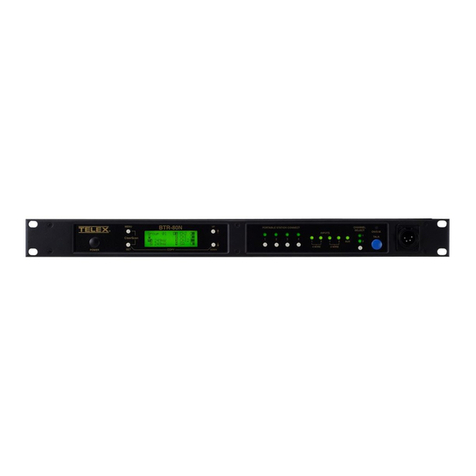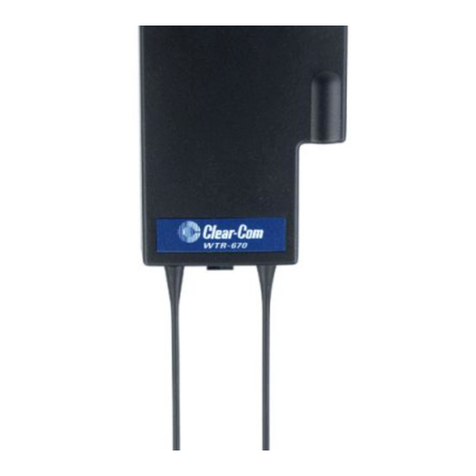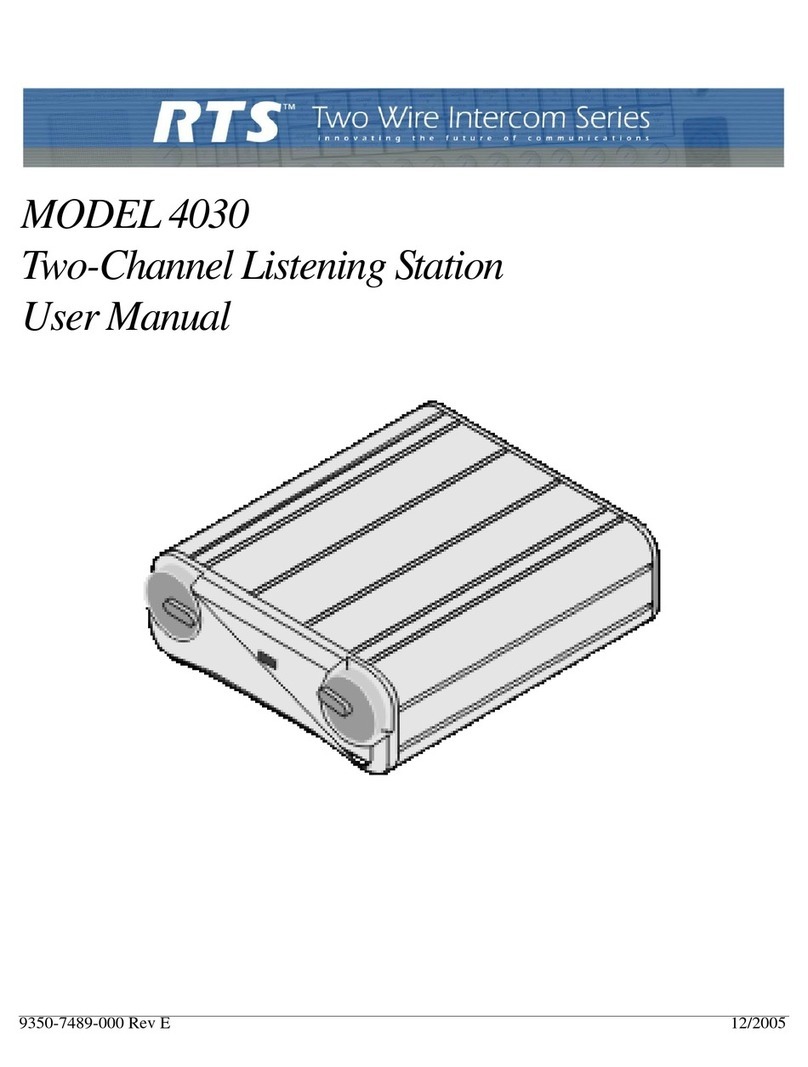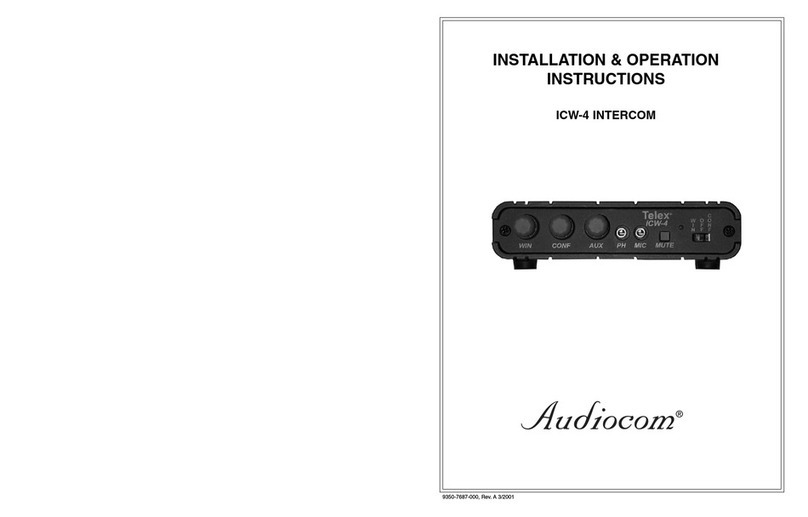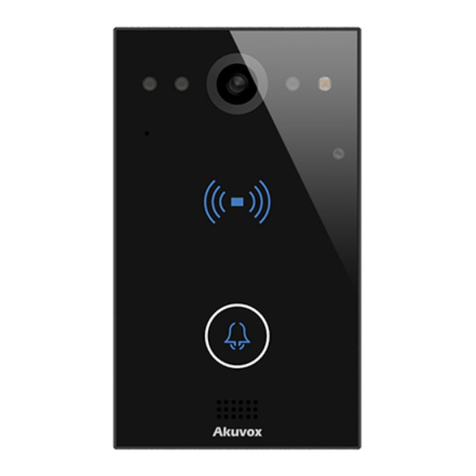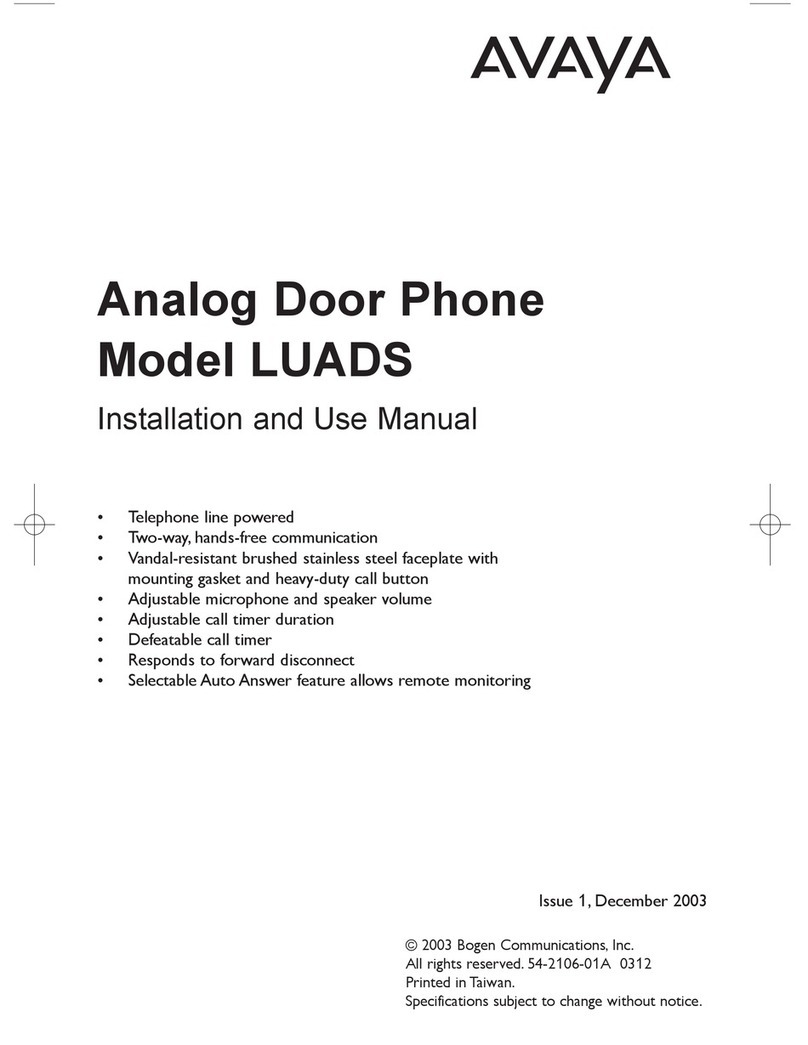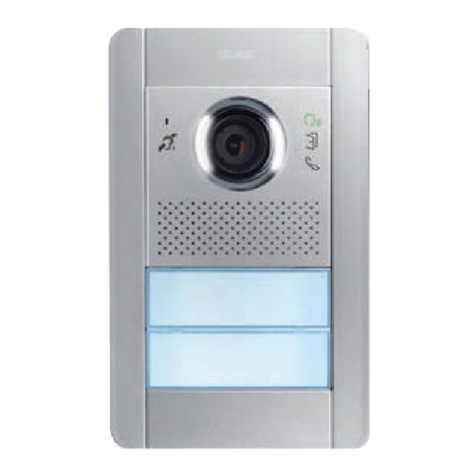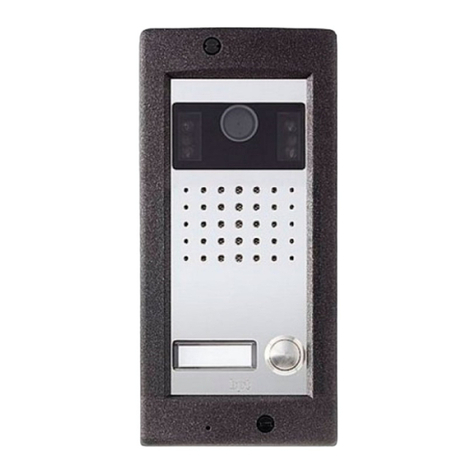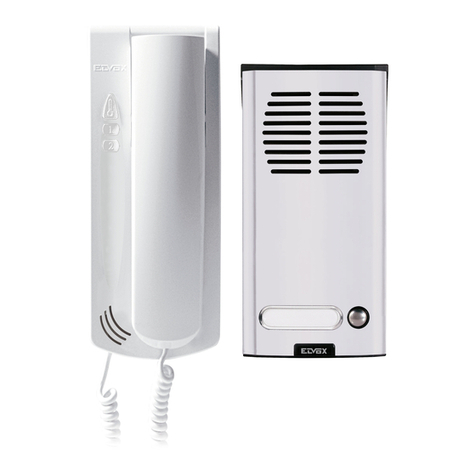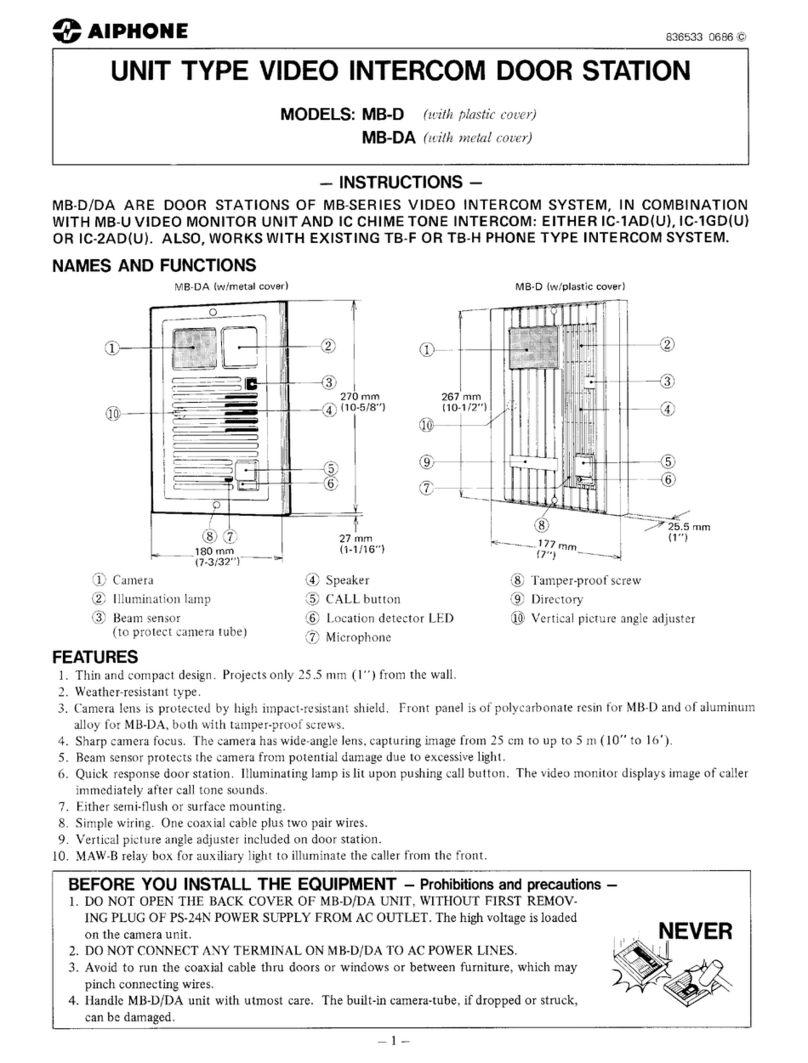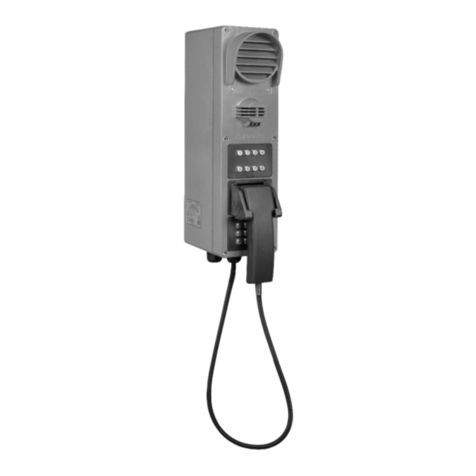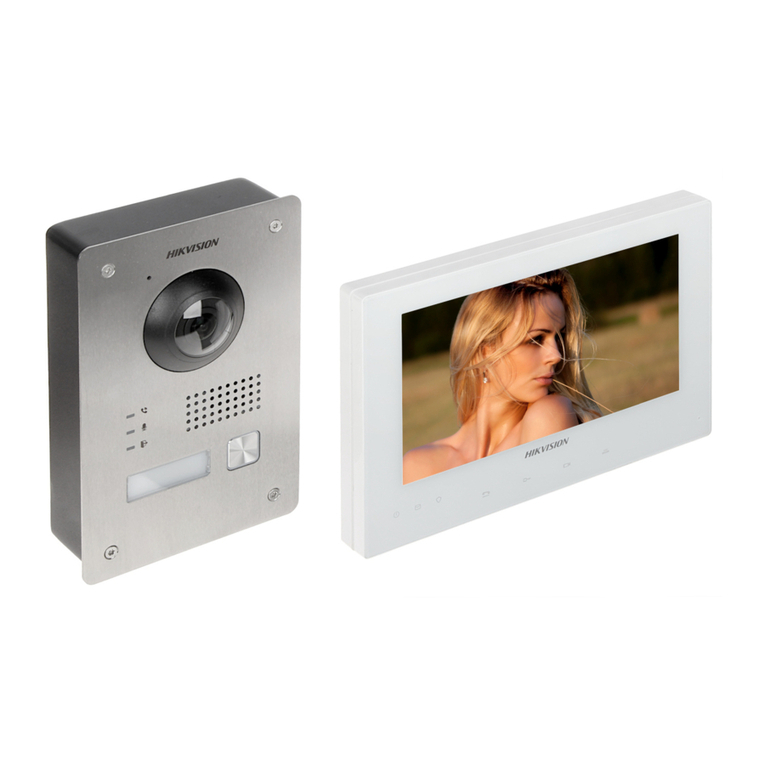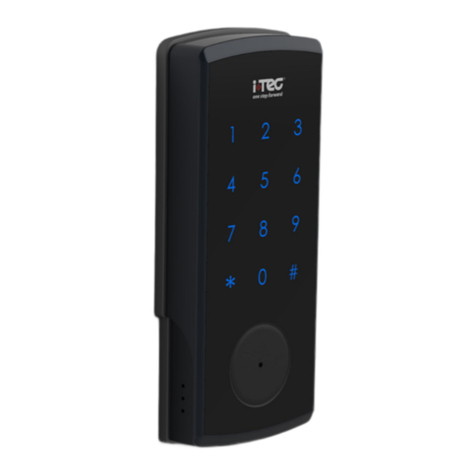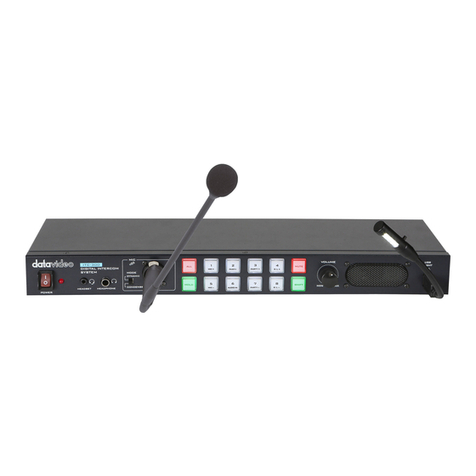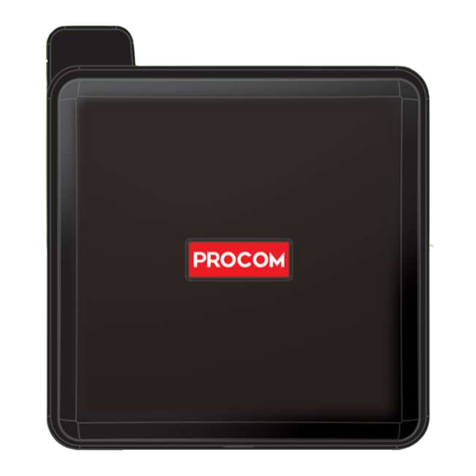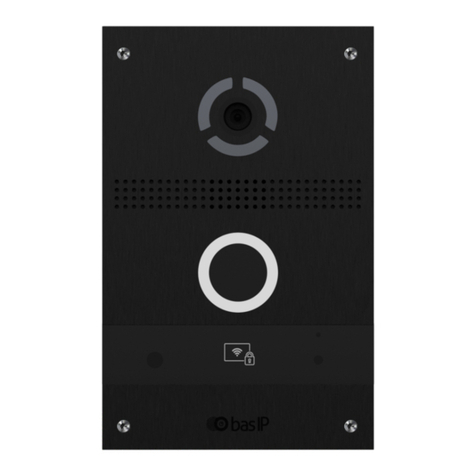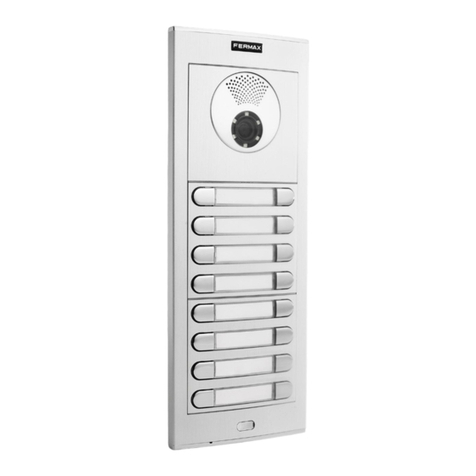
TRANSMIT
BOARD
CIRCUITDESCRIPTION
From the headsetconnectorthe microphonesignal
is first amplified by Q3 and Q4. This pair has a
gain of 12 dB. Depending upon which type of
microphoneisused, S1
is
setby theusertodynamic
or electret. Theelectret position provides an lldB
dropin gain tocompensatefortheextraoutput.
R9
istheuseradjustedmicrophonegaincontrol. UlD,
Q1 and Q2 form
a
peak limiting amplifier which
responds to negative peaks exceeding about,.84
volt in amplitude. When such peaks are en-
countered, Q2 conducts and charges C12, driving
Q1towardpinchoff. Thisreducesthegain momen-
tarily until the input signal is reduced. Visual in-
dication of peak limiting is provided by LED 102
which is driven by U103 when the voltage at pin 3
exceeds the 1.3 volt reference. U103 is also used
to sense the end of battery life and lights LED 102
continuouslywhen this occurs.
D1(version 2 and later) isolates the time constant
of the amplifierfrom that of the LED driver. The
latter is much shorter than the former, and causes
theLEDto extinguishimmediatelyupon removing
theinputsignal. "O_nversion 1
the^^^
willremain
!it for severalsconds.
U1Cisan amplifierwhosegain iscontrolledby the
levelof audio enteringtherectifier atpin 16.
As
the
level here increases,the gain is decreased and this
results in
a
2:
1 compression characteristic. Pre-
emphasisisadded by UlB. R23,R24, and C16 set
this at 115pS. Q5 is used to
turn
the microphone
anmdoffandisdrivenby theqsh-to-talk latch
circuit. When SlOl
is
pressedin and held, Q106is
drivenon viaD103. ThislightsLED 101and gates
on themicrophoneaudio. ReleasingS101turnsoff
themicrophone. U104 doesnotchangestateunder
these conditionsbecause C151 is dischargedwhen
the clock ispulsed.
If,
however, SlOl
is
depressed
twicein quicksuccession,C151willbe chargedfor
thesecond clock pulse andthiswillsetU104. Now
,
the microphone is latched on via Dl04 and will
remain on until SlOl is depressed once again,
resetting U104.
Q7 is a Colpitts oscillatorwith the collector tuned
to the third harmonic. L11, VVCl and VVC2 are
added in serieswith the crystal to allow frequency
modulation of the oscillator. The oscillator is
operated 10
KHz
below theseriesresonant point of
the crystal. This improveslinearityat the expense
of somestability. Q8is atriplerandQ9
is
astraight
through amplifier. The carrier frequency is thus
nine times the crystal. C43, C44 and L7 function
as
alow pass filter and matching network.
ALIGNMENTPROCEDURE
Equipment
Required:
Deviation Meter
RF
Power Meter
Frequency Counter
Audio Generator
DC Power Supply
1. Solderoneend of a50ohm coaxial cablefrom
the transmit antenna pad to ground. Connect
the other end to the deviation meter, power
meter, and frequencycounter.
2. Connectthe audio generatorfrom pin 1(hot)to
pin 2 (ground) of the P.C. board connector. Set
the output to 10mV at 1
KHz.
3. Setthe power supplyfor9 volts and connectit
from pin 11
(+)
to pin 10
(-)
of the P.C. board
connector.
4. Turn
R9
to maximum clockwise.
5. Depress SlOl twice quickly to latch on the
microphone.
If
aligningwith boards separated,
groundpin 8 of the P.C. board connector.
6. Adjust L2, L3,
L4,
C39 and C42for maximum
Dower.
NOTE:
If adjustmenu are severly out of align-
ment and no output can be obtained, it may be
necessary to first adjust L2 and L3 for maximum
DC voltage at the emitter of Q8. Then adjust
LA
for maximum DC voltage
at
the emitter of Q9.
Now adjustC39 and C42 for maximum power.




















